Handling dangerous chemicals
Liquid waste
All of the solutions used in a laboratory must be sorted and thrown away in a suitable collection canister. The sorting of liquid waste is very important because, depending on the type of chemicals collected in the container, the treatment techniques for disposing of the waste will be different (just like the price!).
As with storage, care must also be taken not to mix products that should not be mixed in order to avoid any reaction.
The liquid waste containers you will encounter are as follows:
NON-HALOGENATED ORGANIC SOLVENTS

Solvents that do not contain chlorine, fluorine, bromine
e.g. alkanes, alkenes, alcohol, nitrile, ester, ether, glycol ether, ketone
What I can put in:
Organic toxic solutions with a concentration of less than 0.1% by weight
What I must not put in:
Organic and mineral acids and bases
Halogenated organic solvents
Organic toxic solutions with a concentration of more than 0.1% by weight
Aqueous solutions
HALOGENATED ORGANIC SOLVENTS
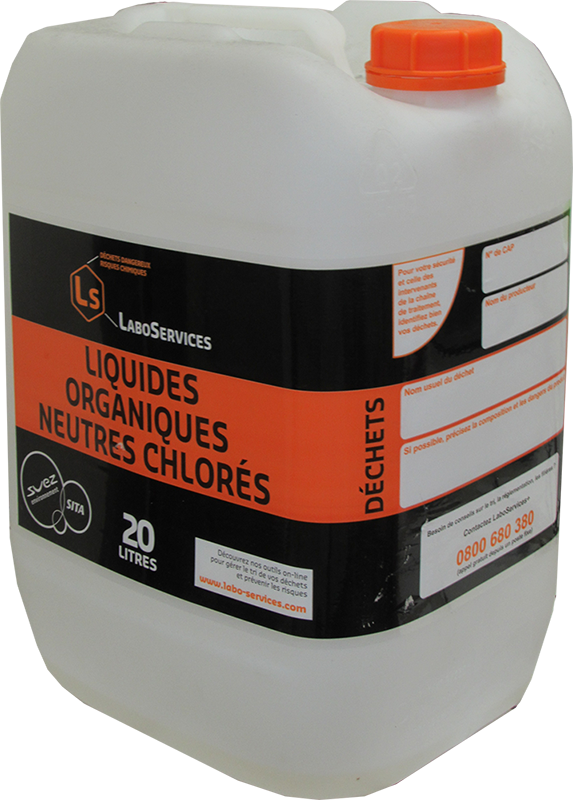
Solvents that contain chlorine, fluorine, bromine
e.g. dichloromethane, chlorobenzene, bromopropane
What I can put in:
Organic toxic solutions with a concentration of less than 0.1% by weight
Non-halogenated organic solvents
What I must not put in:
Organic and mineral acids and bases
Organic toxic solutions with a concentration of more than 0.1% by weight
Aqueous solutions
TOXIC LIQUIDS
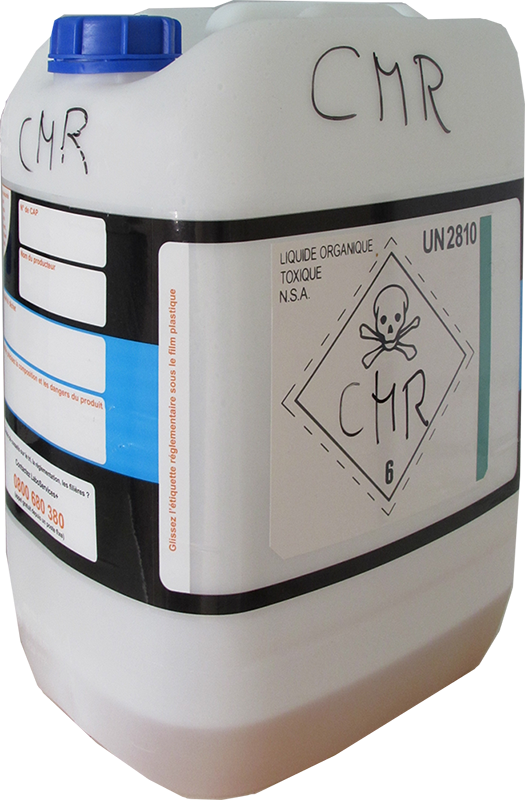
Organic toxic solutions with a concentration of more than 0.1% by weight
What I can put in:
Organic toxic solutions with a concentration of less than 0.1% by weight
Non-halogenated organic solvents
Halogenated organic solvents
What I must not put in:
Organic and mineral acids and bases
Aqueous solutions
ORGANIC AND MINERAL ACIDIC LIQUIDS
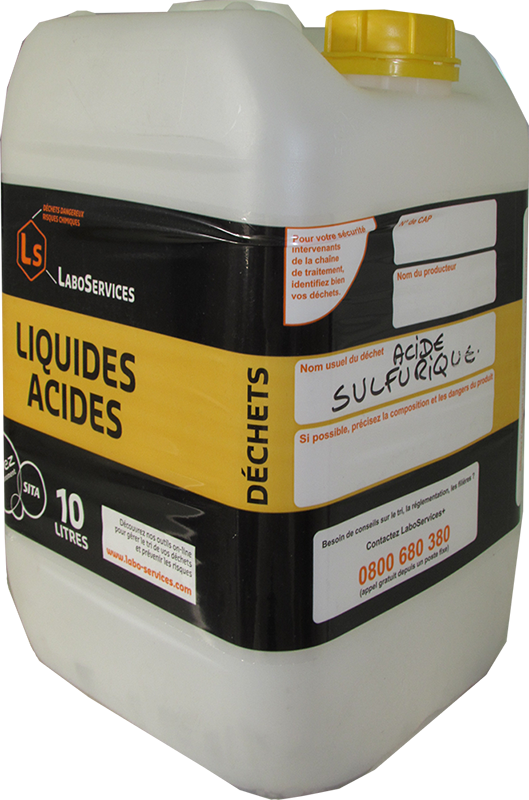
Acidic aqueous solutions (pH e.g. formic acid, hydrochloric acid
What I can put in:
Non-basic (neutral) aqueous solutions, e. g. saline solution NaCl, NaSO4
What I must not put in:
Organic and mineral bases
Organic solvents (halogenated and non-halogenated)
Organic toxic solutions with a concentration of more than 0.1% by weight
ORGANIC AND MINERAL BASIC LIQUIDS

Basic aqueous solutions (pH>9)
e.g. sodium hydroxide (soda), calcium hydroxide, sodium
acetate, ammonium formate
What I can put in:
Non-acidic aqueous solutions (neutral),
e. g. saline solution NaCl, Na2SO4
What I must not put in:
Organic and mineral acids
Organic solvents (halogenated and non-halogenated)
Organic toxic solutions with a concentration of more than 0.1% by weight
HOW TO DISPOSE OF LIQUIDS IN LIQUID WASTE CONTAINERS?
Canisters for liquid waste are usually stored under benches in laboratories. These drums containing large volumes of organic solvents or acids/bases are generally hazardous. It is therefore not advisable to open and close these containers too often. To minimize the number of times they are opened and to reduce operator exposure to toxic vapors, here are some guidelines:
- Never open a container when outside a fume hood.
- Ensure there is a waste beaker to hand at the bench. This beaker will be used to collect liquid waste during experiments and will be emptied at the end so that the container is opened only once during the session.
- Be sure to reserve one waste beaker for each type of liquid used (acids, bases, halogenated organic solvents, etc.) so as not to mix them, as for the drums, because there is a risk of an uncontrolled chemical reaction!!
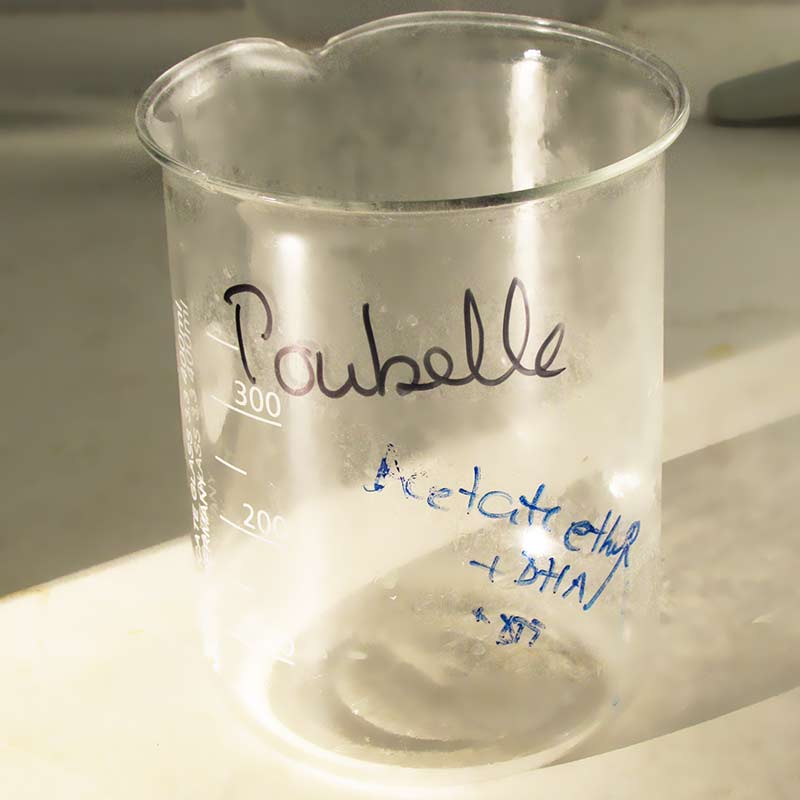
Waste beaker for use at the bench
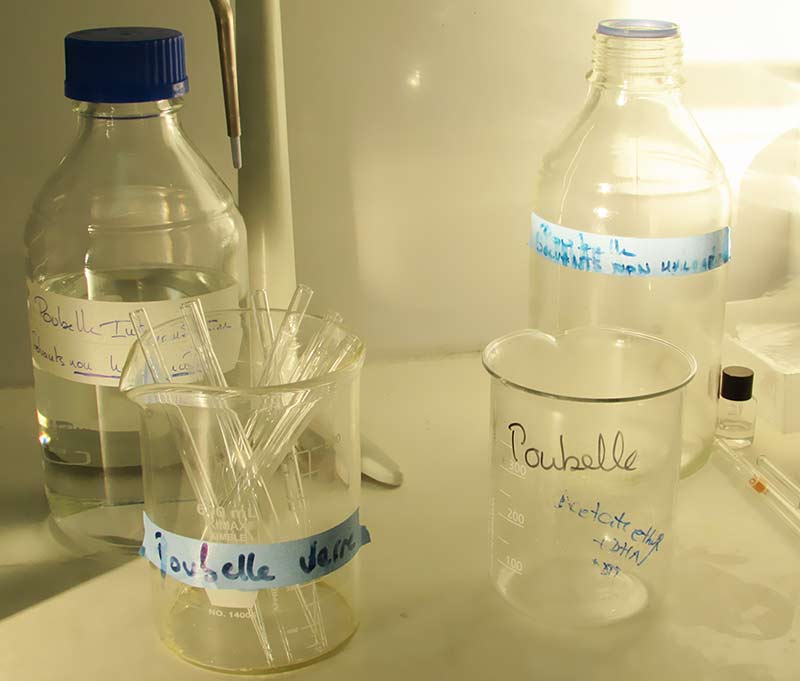
Set of liquid waste disposal receptacles for use at the bench





